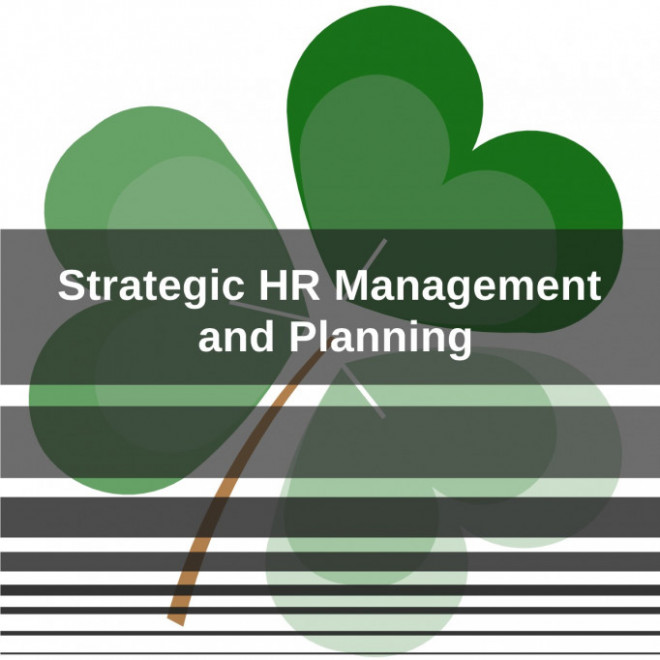Currently, organizations are aware of the competitive advantage that is competent and constantly developing staff and strive for consistent management of employee development, trying to build an effective policy in this area through strategic management of human resources.
Strategic human resource management is an approach for the organization to make informed decisions related to the organization's goals and plans related to human resource management (labor relations, recruitment, learning and development, remuneration as well as policies and practices in the field of employee relations, etc.). The human resource management strategy is an essential component of the entire organization's operating strategy and is based on the assumption that it has a direct impact on the organization's strategy, but is also justified by it.
According to the concept of strategic human resource management, adequate professional development of an employee is a comprehensive "product" of coherent and planned in accordance with the overall organizational strategy of human resource management processes such as:
-
employee evaluation (periodic assessment system, Assessment Center etc.)
-
development planning
-
career paths
-
succession plans (creating reserve staff)
-
talent management - the most talented people in the organization (High Potentials) job descriptions and organization structure
-
remuneration system
PROCESS IMPLEMENTATION STEPS
-
Analysis of the situation in the organization with particular emphasis on strategy
-
Strategic workshops for HR
-
Preparation of documents regarding human resources management strategies
-
Communication and implementation of human resource management strategies
-
Creating human resource management tools based on the adopted strategy.
Also, you can use the HRM system for better process improvement. Brainy HR can make your long process quicker.
BENEFITS FOR ORGANIZATIONS
-
Growth and ability to monitor the effectiveness of human resource management in the organization
-
Subjectivity - increased employee motivation as an internal customer
-
Coherent and comprehensive employee development
-
Creating a strong organizational culture
-
Stimulating the commitment of the entire staff
Development and implementation of HR strategy
It may not be so difficult to develop overall strategic goals, but the development and expression of specific long-term strategies can be much more difficult. In fact, it can be argued that in certain circumstances, this is difficult at all to do, for example, when starting a new business or when the organization is exposed to sudden and sharp external pressures that can only be circumvented tactically.
The key role of strategic human resource management may be to act to adapt to the needs of a dynamic and competitive environment, but it is not that simple. A strategic human resource management process may be desirable, but there are no clear ways to plan it successfully and implement it successfully.
However, despite many difficulties, a strategic approach is advisable to convey a sense of direction and purpose as a basis for developing appropriate and consistent HR policies and practices.
Development process
The process of developing HR strategy entails generating options in the area of strategic human resource management, and then making the right strategic choices. These choices should, as far as you can:
-
meet the needs of the organization and even overtake them
-
be consistent with current or desired organizational culture
-
be able to change the nature and direction of business
-
equip the organization with the ability to effectively deal with external pressures and demands arising from them
-
focus on areas that require it
-
answer basic questions such as "what limits us?", "what prevents us from bringing business results?"
-
based on detailed analysis and research, not just wishful thinking
-
include the experience and collective opinions of senior management
-
take into account the needs of line managers and employees, as well as the needs of the organization itself and its shareholders
-
anticipate problems in the area of implementation that may occur if line managers are not involved in the strategy and / or they lack the skills or time to play their role
-
anticipate any problems that may arise because of hostility or lack of interest from employees or trade unions
-
guarantee that the organization has the resources necessary to implement the strategy
-
predict the acquisition and development of people with the skills needed to manage and maintain the organization in the future so that organizational goals are achieved


 Posted on Jul 7, 2020 by Anna
Posted on Jul 7, 2020 by Anna


